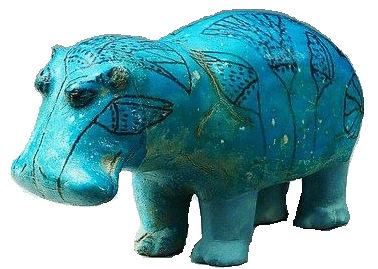
アフリカン・ディアスポラ考古学
African diaspora archaeology

☆
アフリカン・ディアスポラとは、大西洋奴隷貿易、サハラ砂漠横断奴隷貿易、インディアン奴隷貿易によって世界中に強制的に移送されたアフリカ人とその子孫
を含む、アフリカ出身者の子孫のコミュニティの世界的な集合体である。これらの共同体の考古学は世界中に広がっているが、研究の大半はアフリカとアメリカ
大陸からであり、ヨーロッパとアジアからはほとんど研究されていない[1][2]。
| The
African diaspora is the worldwide collection of communities descended
from people from Africa, including Africans that were forcibly
transported throughout the world by the Atlantic slave trade, the
Trans-Saharan slave trade, or the Indian Ocean slave trade and their
descendants. The archaeology of these communities has worldwide scope,
but the majority of research comes from Africa and the Americas, with
very little from Europe and Asia.[1][2] |
ア
フリカン・ディアスポラとは、大西洋奴隷貿易、サハラ砂漠横断奴隷貿易、インディアン奴隷貿易によって世界中に強制的に移送されたアフリカ人とその子孫を
含む、アフリカ出身者の子孫のコミュニティの世界的な集合体である。これらの共同体の考古学は世界中に広がっているが、研究の大半はアフリカとアメリカ大
陸からであり、ヨーロッパとアジアからはほとんど研究されていない[1][2]。 |
| Terminology African diaspora archaeology developed out of the studies of Africans and their descendants in research confined to specific locations. The term African diaspora was not used in archaeology until the 1990s, prior to its use, localized terminology such as Afro-Caribbean and African-American was used, and in some cases, “African diaspora” was adopted as a term intended to unify research beyond borders and oceans.[1] |
用語解説 アフリカン・ディアスポラ考古学は、特定の場所に限定された研究におけるアフリカ人とその子孫の研究から発展した。アフリカン・ディアスポラという用語が 考古学で使われるようになったのは1990年代に入ってからであり、それ以前はアフロ・カリビアンやアフリカ系アメリカ人といった地域限定の用語が使われ ており、国境や海を越えた研究の統一を意図した用語として「アフリカン・ディアスポラ」が採用される場合もあった[1]。 |
| Themes and research topics Maritime archaeology This archaeological subfield pertains to studying human interaction with the sea, not limited to sites found under water. Maritime archaeology is relevant to the study of the African Diaspora through the maritime aspect of the three slave trades of special interest in the process of enslavement, as well as in African and Diasporic spiritual associations with the sea, maritime-related labor, and the sea as an avenue to freedom.[3] Plantation slavery Archaeology on plantations is a major focus in the United States and can cover various aspects of the lives and experiences of the enslaved, including but not limited to the formation of identities, the relationship between master and enslaved, religious practice, and gender. [1] Resistance Many sites and research are focused around the idea of resistance; within this category are sites associated with Fugitivity, meaning the self-emancipated enslaved, also known as runaway slaves or Maroons. Also of interest are long-term Maroon settlements, also called Quilombos or Palenques.[1][4] Transculturation Coined by Cuban polymath Fernando Ortiz, transculturation is “the multigenerational, multidirectional transition from one cultural condition to another.” transculturation has become a major theme of interest in Latin America but has not found as wide adoption in the United States or Europe.[5][6] |
テーマと研究テーマ 海洋考古学 この考古学のサブフィールドは、水中で発見された遺跡に限らず、人間と海との相互作用を研究することに関連する。海洋考古学は、奴隷化のプロセスにおいて 特に関心の高い3つの奴隷貿易の海洋的側面や、アフリカ人やディアスポラ人の精神的な海との関連、海洋関連労働、自由への道としての海を通して、アフリカ ン・ディアスポラの研究に関連している[3]。 プランテーションの奴隷制度 プランテーションでの考古学は、アメリカでは主要な焦点であり、アイデンティティの形成、主人と奴隷の関係、宗教的実践、ジェンダーなど、奴隷の生活や経験の様々な側面を取り上げることができる。[1] 抵抗 このカテゴリーには、逃亡奴隷やマルーンとしても知られる、自己解放された奴隷を意味する「逃亡」に関連するサイトが含まれる。また、キロンボやパレンケスとも呼ばれる長期的なマルーンの居住地も興味深い[1][4]。 トランスカルチュレーション トランスカルチュレーションとは、「ある文化的条件から別の文化的条件への多世代的、多方向的な移行」のことである。トランスカルチュレーションはラテンアメリカでは主要なテーマとなっているが、アメリカやヨーロッパではそれほど広く採用されていない[5][6]。 |
| Brazil Brazil is credited with the earliest known example of African Diaspora archaeology, conducted in the 1930s. Burials attributed to fugitive slaves were excavated in caves located in Serra Negra.[1] Palmares In an example of archaeology of a maroon settlement, Pedro Funari and Charles Orser conducted archaeology at Palmares in the early 1990s with the goals of using archaeology to gain a better understanding of racism, resistance to racism, and to empower “subordinate groups." Orser and Funari have found material evidence of traits that come from European, Indigenous, and African cultures, which others have claimed as an example of ethnogenesis and the formation of a new cultural identity at Palmares. Interpretation of the archaeological assemblage at Palmares has added to the information in the historic record as well as challenged interpretations of the archaeological records that have interpreted the inhabitants of Palmares as “lazy” and "Barbarians." Funari's interpretation claims that the archaeology at Palmares shows a people capable of maintaining their cultural autonomy, yet at the same time, this maroon community was interacting with European colonists and exchanging goods.[7] Valongo Wharf In 2011, the Valongo Wharf, the largest port for the arrival of enslaved Africans in Brazil, the country where the majority of enslaved Africans were transported in the Atlantic slave trade, was excavated in Rio de Janeiro. Excavations were conducted with the specific goals of challenging racism, aversion to discussing topics of slavery, and discussing the legacy of slavery in contemporary society. Found at the site were artifacts and symbols associated with African religious traditions, such as cowries and anthropomorphic stones. The archaeologists, in collaboration with the descendant communities and Afro-Brazilian religious leaders, acquiesced to their right to interpret these findings. The site became a place of ancestor remembrance for some in the Afro-Brazilian community, and collaboration increased to include Afro-Brazilian social activists. The site, however, was largely ignored by the Afro-Brazilian population as well as the population as a whole. According to Valongo Wharf Archaeologist Tania Andrade and others, this is in part due to the desire of many Afro-Brazilian descendants to distance themselves from the difficult past of slavery as well as associated stigmas and the discomfort of white Brazilians in bringing to the forefront Black experiences of subjugation and cruelty at the hands of Europeans. The site has since gained a greater presence in Brazil with the publication of literature and through activism. The site has also gained a global presence through its inscription on the UNESCO World Heritage List in 2017, recognizing the Valongo wharf as a site of world heritage of universal value.[8] |
ブラジル ブラジルは、1930年代に実施されたアフリカン・ディアスポラ考古学の最も古い例として知られている。セラ・ネグラにある洞窟で、逃亡奴隷のものとされる埋葬品が発掘された[1]。 パルマレス マルーン人の集落の考古学の一例として、ペドロ・フナリとチャールズ・オーサーは、人種主義、人種主義への抵抗、そして 「従属集団 」のエンパワーメントを考古学でより深く理解することを目的に、1990年代初頭にパルマレスで考古学を行った。オーサーとフナーリは、ヨーロッパ、先住 民、アフリカの文化に由来する形質の物質的証拠を発見し、他の人々はパルマレスにおける民族形成と新しい文化的アイデンティティの形成の一例であると主張 している。パルマレスの考古学的集合体の解釈は、歴史的記録の情報を追加するだけでなく、パルマレスの住民を 「怠け者 」や 「野蛮人 」と解釈してきた考古学的記録の解釈に異議を唱えるものでもある。フナリの解釈では、パルマレスの考古学は、文化的自治を維持することができる人々を示し ているが、同時にこのマルーン人のコミュニティはヨーロッパ人入植者と交流し、物品を交換していたと主張している[7]。 ヴァロンゴ埠頭 2011年、リオデジャネイロで、大西洋奴隷貿易で奴隷にされたアフリカ人の大半が輸送された国であるブラジルで、奴隷にされたアフリカ人が到着した最大 の港であるヴァロンゴ埠頭が発掘された。発掘調査は、人種主義、奴隷制の話題を議論することへの嫌悪感、現代社会における奴隷制の遺産を議論することに挑 戦するという具体的な目標を持って行われた。遺跡からは、カウリーや擬人化された石など、アフリカの宗教的伝統に関連する遺物やシンボルが発見された。考 古学者たちは、子孫コミュニティやアフロ・ブラジルの宗教指導者たちと協力して、これらの発見物を解釈する権利を認めた。この遺跡は、アフロ・ブラジリア ン・コミュニティの一部にとって祖先を偲ぶ場所となり、アフロ・ブラジリアンの社会活動家も参加するようになった。しかし、この遺跡は、アフロ・ブラジリ アンの人々だけでなく、住民全体からもほとんど無視されていた。ヴァロンゴ埠頭の考古学者タニア・アンドラーデらによれば、その理由のひとつは、多くのア フロ・ブラジリアンの子孫が、奴隷制度やそれにまつわる汚名といった困難な過去から距離を置きたがっていたことと、ヨーロッパ人の手による黒人の被支配や 残酷な体験を前面に出すことにブラジル白人が不快感を抱いていたことだという。このサイトはその後、文献の出版や活動を通じてブラジル国内での存在感を高 めてきた。また、2017年にユネスコの世界遺産リストに登録され、ヴァロンゴ埠頭が普遍的価値を持つ世界遺産として認定されたことで、世界的な存在感を 増している[8]。 |
| Cuba The study of the African diaspora through archaeology began in Cuba with the study of slavery and fugitive slaves, starting heavily in the 1960s in parallel with that of the United States Archaeology of Plantations, although archaeology has been conducted earlier. Archaeologist Eladio Elso conducted research at cimarrones (impermanent fugitive slave encampments) in 1946 in Pinar del Río. Interest in Afro-Cuban archaeology increased after the Cuban Revolution, when Cuba was officially proclaimed a socialist nation. Cuban history and archaeology were deemed to be of national importance, alongside themes of resistance and struggle.[9][1][5] Cimarrones Since 1983, archaeologist Gabino La Rosa Corzo has worked on the archaeology of slavery under themes of resistance, daily life, subsistence, and transculturation at sites in Cuba. through research at 30 cimarrones, all of which are rock shelters or caves, in the Havana-Matanza upland region of Cuba. La Rosa Corzo has found artifacts and remnants of objects used in the lives of fugitive slaves that are claimed to show cultural continuity from African traditions as well as cultural transformation and dependencies on plantations or stores. Found among the sites were items such as pottery, machetes, knives, hoes, and pipes. La Rosa Corzo found evidence that fugitive slaves created pottery using techniques that were likely of African origin, distinct from Indigenous and European techniques found in Cuba. The archaeologist also found in food remains that fugitives hunted and used natural resources as well as resources from haciendas (plantations), adding to and contrasting archival records that only describe theft from haciendas. Among the assemblages found were clay cones called "hormas,” which were used in the processing of cane sugar. La Rosa Corzo claims that sugar consumption became a habit induced by life on sugar plantations. Decorations are also found on smoking pipes called “cachimbas” that have decorations or symbols that resemble those found in African traditions, where many of the enslaved in Cuba originated. The archaeologist also challenged historical documents that claimed the diet of those enslaved on plantations was the same as that of fugitives and that fugitive diets lacked African elements. These points have been challenged by archaeological evidence of the consumption of more varied and fresher foods at fugitive sites than at plantation sites and the retention of soup-based traditions from Africa.[1][5][10] |
キューバ 考古学によるアフリカン・ディアスポラの研究は、キューバでは奴隷制度と逃亡奴隷の研究から始まり、1960年代には米国のプランテーション考古学と並行 して盛んに行われるようになったが、考古学はそれ以前から行われていた。考古学者のエラディオ・エルソは、1946年にピナール・デル・リオでシマロン (無常な逃亡奴隷の野営地)の調査を行った。アフロ・キューバ考古学への関心が高まったのは、キューバ革命後、キューバが社会主義国民として正式に宣言さ れてからである。キューバの歴史と考古学は、抵抗と闘争のテーマと並んで国民的に重要であるとみなされた[9][1][5]。 シマロン 1983年以来、考古学者ガビノ・ラ・ロサ・コルソは、キューバのハバナ-マタンサ高地地方にある30のシマロン(いずれも岩のシェルターまたは洞窟)で の調査を通じて、抵抗、日常生活、自給自足、トランスカルチュレーションをテーマに、キューバの遺跡における奴隷制の考古学に取り組んできた。ラ・ロサ・ コルソは、逃亡奴隷の生活で使用された工芸品や遺物を発見し、アフリカの伝統からの文化的連続性を示すと同時に、文化的変容やプランテーションや商店への 依存を主張した。遺跡からは、陶器、ナタ、ナイフ、鍬、パイプなどが発見された。ラ・ロサ・コルソは、逃亡奴隷がキューバで発見された先住民やヨーロッパ 人の技法とは異なる、アフリカ起源と思われる技法で陶器を作った証拠を発見した。考古学者はまた、逃亡者がハシエンダ(プランテーション)からの資源だけ でなく、自然資源も狩り、利用していたことを食物から発見した。出土品の中には、サトウキビの砂糖加工に使われた「ホルマス」と呼ばれる粘土の円錐があっ た。ラ・ロサ・コルソは、砂糖の消費は砂糖プランテーションでの生活によって習慣化したと主張している。また、「カチンバ」と呼ばれる喫煙パイプには、 キューバの奴隷の多くが起源とするアフリカの伝統に似た装飾やシンボルが見られる。考古学者はまた、プランテーションで奴隷にされた人々の食生活は逃亡者 のそれと同じであり、逃亡者の食生活にはアフリカ的な要素が欠けていたとする歴史文書にも異議を唱えた。これらの指摘は、プランテーションの遺跡よりも逃 亡者の遺跡の方がより多様で新鮮な食品を消費していたという考古学的証拠や、アフリカからのスープをベースとした伝統の保持によって否定されている[1] [5][10]。 |
| Peru The Haciendas of Nasca archaeological project, or PAHN, established in 2009, is the first Peruvian archaeological project focused on slavery and the African Diaspora. The project engages in Afro-Peruvian and African Diaspora archaeology that focuses on engagement with the Peruvian public while collaborating with descendant communities, similar to the methods used at the African Burial Ground in New York. PAHN attempts to use archaeology to address contemporary issues such as the legacy of slavery and racism.[11] |
ペルー 2009年に設立されたHaciendas of Nasca考古学プロジェクト(PAHN)は、奴隷制度とアフリカン・ディアスポラに焦点を当てたペルー初の考古学プロジェクトである。このプロジェクト は、アフロ・ペルーとアフリカン・ディアスポラの考古学に取り組んでおり、ニューヨークのアフリカ埋葬地で用いられた手法と同様に、子孫コミュニティと協 力しながら、ペルーの一般市民との関わりを重視している。PAHNは、奴隷制度や人種主義の遺産といった現代的な問題に考古学を用いて取り組もうとしてい る[11]。 |
| The United States African Diaspora Archaeology in the Americas first emerged as a specialty and has received the most attention in the United States coming from the research of African American Historical Archaeology. The history of racism, the glorification of “great men," and the exclusion of women in archaeology made it so that African American archaeology did not become a serious area of interest in archaeology until the 1960s, during the civil rights movement, with excavations prodded by civil rights activists with goals of preserving and protecting locations of historic importance to Africans as well as the Beautification Project of First Lady Lady Bird Johnson which inspired a movement for the protection of historic buildings. Sites previously not of archeological significance were studied, and those deemed to be important but excluded the enslaved were reexamined, such as at Monticello.[12][1] |
アメリカ アメリカ大陸におけるアフリカン・ディアスポラ考古学は、アフリカ系アメリカ人歴史考古学の研究によって初めて専門分野として確立され、アメリカで最も注 目されるようになった。人種主義、「偉人 」の美化、考古学における女性の排除といった歴史的背景から、アフリカ系アメリカ人の考古学が考古学の分野で本格的な関心を集めるようになったのは、公民 権運動の最中である1960年代になってからである。以前は考古学的に重要でなかった場所が調査され、モンティチェロのように、重要ではあるが奴隷として 扱われていなかった場所が再検討された[12][1]。 |
| Kingsley Plantation An early excavation in African American archaeology was the Kingsley Plantation Enslaved Quarters in 1969. Sanctioned by the Florida State Park in the hope of using information from the excavation in a recreation of enslaved quarters. The archaeologist charged with excavating, Charles Fairbanks, saw the opportunity to uncover information unrecorded to history on the creations of enslaved Africans and “Africanisms'' (expressions of African culture carried and persisting in the Americas) that Fairbanks hoped would provide an archaeological link between Africa and Florida.[1][13][14] |
キングスレー・プランテーション アフリカ系アメリカ人の考古学における初期の発掘は、1969年のキングスレー・プランテーションの奴隷宿舎であった。フロリダ州立公園によって認可さ れ、奴隷の宿舎の再現に発掘の情報を利用することが期待された。発掘を担当した考古学者チャールズ・フェアバンクスは、奴隷にされたアフリカ人の創造物や 「アフリカニズム」(アメリカ大陸に伝わり、存続しているアフリカ文化の表現)に関する歴史に記録されていない情報を発見する機会を得て、フェアバンクス がアフリカとフロリダを考古学的に結びつけることを期待した[1][13][14]。 |
| Colono Ware Leland Ferguson, through the 1970s and 1980s, conducted plantation archaeology in South Carolina, Virginia, and Florida and connected low-fired pottery called Colono Ware to enslaved Africans. Ferguson claimed that artifacts maintained features of African culture and symbolism. Archaeologists before Ferguson had only attributed this type of pottery to Indigenous Americans, never connecting this type of pottery, which exhibits features of Indigenous, European, and African design, to enslaved Africans. [12] |
コロノ・ウェア リーランド・ファーガソンは1970年代から1980年代にかけて、サウスカロライナ州、バージニア州、フロリダ州でプランテーション考古学を行い、コロ ノ焼と呼ばれる低火度陶器制作のために使われた奴隷アフリカ人と結びつけた。ファーガソンは、出土品がアフリカ文化や象徴主義の特徴を保っていると主張し た。ファーガソン以前の考古学者たちは、このタイプの陶器をアメリカ先住民のものとしか考えておらず、先住民、ヨーロッパ人、アフリカ人のデザインの特徴 を示すこのタイプの陶器を奴隷にされたアフリカ人と結びつけることはなかった。[12] |
| African Burial Grounds The African Burial Grounds project in New York has addressed issues of racism, white hegemony within the field of archaeology, and the role of descendant communities in interpretation and participation. A research team under the direction of anthropologist and archaeologist Michael Blakey beginning in 1992 began using a descendant community collaboration approach after outcry from the New York Black citizens against the work of archaeologists previously engaged in archaeology at the site. The first team acting under the Historic Preservation Act and conducting archaeology on the burial grounds due to the construction of a government building, according to Blakey, failed to heed the concerns of the community. According to Blakey, this team failed to consider community issues with research questions and focused on the then-common practice of using race as a biological feature rather than a social construct. The original team also lacked insight from African American perspectives and knowledge of African history. The second team, under Blakey, with permission from the descendant community, transported 419 human remains to the Cobb biological laboratory at Howard University for analysis, denying the use of race as a biological feature. Archaeology at the African burial grounds was conducted with insight from collaboration between disciplines and knowledge of African history. Archaeology at the African Burial Grounds is credited with bringing awareness to the history of slavery in New York when it created the idea of the descendant community and collaboration between archaeologists and the descendant community, with the interests of the descendant community prioritized as an ethical human right. The remains of those from the burial grounds have since been reinterred, and today a monument has been dedicated.[15] [16][17] |
アフリカの埋葬地 ニューヨークのアフリカ埋葬地プロジェクトは、人種主義、考古学分野における白人のヘゲモニー、解釈や参加における子孫コミュニティの役割といった問題を 取り上げてきた。1992年、人類学者であり考古学者でもあるマイケル・ブレイキーの指揮のもと、調査チームが子孫コミュニティとの共同作業を開始したの は、以前この遺跡で考古学に携わっていた考古学者の仕事に対して、ニューヨークの黒人市民が反発したことがきっかけだった。ブレイキーによれば、歴史保存 法に基づいて行動し、政府庁舎建設のために埋葬地で考古学を行なった最初のチームは、コミュニティーの懸念に耳を傾けなかったという。ブレイキーによる と、このチームは調査項目で地域社会の問題を考慮せず、当時一般的だった、人種を社会的構成要素ではなく生物学的特徴として用いることに重点を置いた。ま た、当初のチームにはアフリカ系アメリカ人の視点からの洞察やアフリカの歴史に関する知識が欠けていた。ブレイキー率いる第2チームは、子孫コミュニティ の許可を得て、419体の人骨をハワード大学のコブ生物学研究所に運び、生物学的特徴としての人種の使用を否定した。アフリカ埋葬地での考古学は、専門分 野間の協力とアフリカ史の知識による洞察によって行われた。アフリカ人埋葬地での考古学は、子孫コミュニティという考え方を生み出し、考古学者と子孫コ ミュニティの協力関係を築き、子孫コミュニティの利益を倫理的人権として優先させたことで、ニューヨークにおける奴隷制の歴史に気づきを与えたと評価され ている。その後、埋葬地の人々の遺骨は再び埋葬され、今日では記念碑が捧げられている[15][16][17]。 |
| References Singleton, Theresa (2010). "African Diaspora in Archaeology". In Olaniyan, Tejumola; Sweet, James (eds.). The African Diaspora and The Disciplines. Bloomington, Ind : Indiana University Press. pp. 119–134. ISBN 9780253354648. Fennell, Christopher (2020). "African Diaspora Archaeology". In Smith, Claire (ed.). Encyclopedia of Global Archaeology (2nd ed.). Springer Cham. pp. 58–59. ISBN 978-3-030-30018-0. McGhee, Fred (2007). "Maritime Archaeology and the African Diaspora". In Ogundiran, Akinwumi; Falola, Toyin (eds.). Archaeology of Atlantic Africa and the African diaspora. Blacks in diaspora. Indianapolis: Indiana university press. pp. 384–393. ISBN 978-0-253-34919-4. Funari, Pedro Paulo A.; Orser, Charles E. (2015). "Archaeology, Slavery, and Marronage: A Complex Relationship". In Funari, Pedro Paulo A.; Orser, Charles E. (eds.). Current perspectives on the archaeology of African slavery in Latin America. Springer briefs in archaeology. New York: Springer. pp. 1–4. ISBN 978-1-4939-1264-3. La Rosa Corzo, Gabino (2010). "The Archaeology of Escaped Slaves". In Kepecs, Susan M.; Curet, L. Antonio; La Rosa Corzo, Gabino (eds.). Beyond the blockade: new currents in Cuban archaeology. Caribbean archaeology and ethnohistory. Tuscaloosa: University of Alabama Press. pp. 126–141. ISBN 978-0-8173-8492-0. Funari, Pedro; Ferreira, Lúcio (2016). "Historical Archaeology Outlook: A Latin American Perspective". Historical Archaeology. 50 (3): 100–107. doi:10.1007/BF03377336. ISSN 0440-9213 – via Springer Complete Journals. Funari, Pedro (2007). "The Archaeological Study of the African Diaspora in Brazil". In Ogundiran, Akinwumi; Falola, Toyin (eds.). Archaeology of Atlantic Africa and the African diaspora. Blacks in diaspora. Indianapolis: Indiana university press. pp. 355–371. ISBN 978-0-253-34919-4. Lima, Tania Andrade (2020-10-01). "Valongo: An Uncomfortable Legacy". Current Anthropology. 61 (S22): S317 – S327. doi:10.1086/709820. ISSN 0011-3204. Jane Berman, Mary; Febles, Jorge; Gnivecki, Perry (2005). "The Organization of Cuban Archaeology". In Curet, L. Antonio; Dawdy, Shannon Lee; La Rosa Corzo, Gabino (eds.). Dialogues in Cuban Archaeology. Society for American archaeology. Tuscaloosa: The university of Alabama press. p. 48. ISBN 978-0-8173-1464-4. La Rosa Corzo, Gabino (2005). "Subsistence of Cimarrones: An Archaeological Study". In Curet, L. Antonio; Dawdy, Shannon; La Rosa Corzo, Gabino (eds.). Dialogues in Cuban archaeology. Tuscaloosa, Ala: Univ. of Alabama Press. pp. 163–180. ISBN 978-0-8173-1464-4. Weaver, Brendan J. M.; Fhon Bazán, Miguel A.; Santana Quispe, Lady (2022). "Heritage and the Archaeology of Afro-Peru: Community Engagement in the Valleys of Nasca". Historical Archaeology. 56 (1): 131–152. doi:10.1007/s41636-021-00309-0. ISSN 0440-9213. PMC 8906358. PMID 35287280. Ferguson, Leland (1992). Uncommon ground: archaeology and early African America, 1650 - 1800. Washington, D.C.: Smithsonian Institution Press. pp. xxxv–xxxix. ISBN 978-1-56098-058-2. Agbe-Davies, Anna (2007). "Practicing African American Archaeology in The Atlantic World". In Ogundiran, Akinwumi; Falola, Toyin (eds.). Archaeology of Atlantic Africa and the African diaspora. Blacks in diaspora. Indianapolis: Indiana university press. pp. 413–425. ISBN 978-0-253-34919-4. Orser Jr., Charles (2023). Living ceramics, storied ground : a history of African American archaeology. Gainesville : University Press of Florida. pp. 5–20. ISBN 9780813069791. Leone, Mark P.; LaRoche, Cheryl Janifer; Babiarz, Jennifer J. (2005-10-01). "THE ARCHAEOLOGY OF BLACK AMERICANS IN RECENT TIMES". Annual Review of Anthropology. 34 (1): 575–598. doi:10.1146/annurev.anthro.34.081804.120417. ISSN 0084-6570. Blakey, Michael L. (2020-10-01). "Archaeology under the Blinding Light of Race". Current Anthropology. 61 (S22): S183 – S197. doi:10.1086/710357. ISSN 0011-3204. Blakey, Michael L. (2010). "African Burial Ground Project: paradigm for cooperation?". Museum International. 62 (1–2): 61–68. doi:10.1111/j.1468-0033.2010.01716.x. ISSN 1350-0775. |
参考文献 Singleton, Theresa (2010). 「考古学におけるアフリカン・ディアスポラ」. Olaniyan, Tejumola; Sweet, James (eds.). The African Diaspora and The Disciplines. Bloomington, Ind : Indiana University Press. ISBN 9780253354648. Fennell, Christopher (2020). 「African Diaspora Archaeology」. In Smith, Claire (ed.). Encyclopedia of Global Archaeology (2nd ed.). pp. 58-59. ISBN 978-3-030-30018-0. McGhee, Fred (2007). 「Maritime Archaeology and the African Diaspora」. In Ogundiran, Akinwumi; Falola, Toyin (eds.). Archaeology of Atlantic Africa and the African diaspora. Blacks in diaspora. Indianapolis: Indiana university press. 384-393. ISBN 978-0-253-34919-4. Funari, Pedro Paulo A.; Orser, Charles E. (2015). 「Archaeology, Slavery, and Marronage: 複雑な関係」. In Funari, Pedro Paulo A.; Orser, Charles E. (eds.). Current perspectives on the archaeology of African slavery in Latin America. Springer briefs in archaeology. ニューヨーク: pp. 1-4. ISBN 978-1-4939-1264-3. La Rosa Corzo, Gabino (2010). 「The Archaeology of Escaped Slaves」. In Kepecs, Susan M.; Curet, L. Antonio; La Rosa Corzo, Gabino (eds.). Beyond the blockade: New Currents in Cuban archaeology. カリブ海の考古学と民族歴史学。Tuscaloosa: University of Alabama Press. ISBN 978-0-8173-8492-0. Funari, Pedro; Ferreira, Lúcio (2016). 「歴史考古学の展望: ラテンアメリカの視点」. Historical Archaeology. 50 (3): 100–107. doi:10.1007/BF03377336. ISSN 0440-9213 - via Springer Complete Journals. Funari, Pedro (2007). 「The Archaeological Study of the African Diaspora in Brazil」. In Ogundiran, Akinwumi; Falola, Toyin (eds.). Archaeology of Atlantic Africa and the African diaspora. Blacks in diaspora. Indianapolis: Indiana university press. 355-371. ISBN 978-0-253-34919-4. Lima, Tania Andrade (2020-10-01). 「ヴァロンゴ: 不快な遺産」. Current Anthropology. 61 (S22): doi:10.1086/709820. issn 0011-3204. Jane Berman, Mary; Febles, Jorge; Gnivecki, Perry (2005). 「The Organization of Cuban Archaeology」. In Curet, L. Antonio; Dawdy, Shannon Lee; La Rosa Corzo, Gabino (eds.). Dialogues in Cuban Archaeology. Society for American archaeology. Tuscaloosa: The university of Alabama press. ISBN 978-0-8173-1464-4. La Rosa Corzo, Gabino (2005). 「シマロン人の生計: An Archaeological Study」. In Curet, L. Antonio; Dawdy, Shannon; La Rosa Corzo, Gabino (eds.). Dialogues in Cuban archaeology. Tuscaloosa, Ala: Univ. of Alabama Press. ISBN 978-0-8173-1464-4. Weaver, Brendan J. M.; Fhon Bazán, Miguel A.; Santana Quispe, Lady (2022). 「Heritage and the Archaeology of Afro-Peru: Heritage and Archaeology of Afro-Peru: Community Engagement in the Valleys of Nasca」. Historical Archaeology. 56 (1): 131–152. doi:10.1007/s41636-021-00309-0. ISSN 0440-9213. PMC 8906358. PMID 35287280. Ferguson, Leland (1992). Uncommon Ground: Archaeology and Early African America, 1650 - 1800. ワシントンD.C.: Smithsonian Institution Press. ISBN 978-1-56098-058-2. Agbe-Davies, Anna (2007). 「大西洋世界におけるアフリカ系アメリカ人考古学の実践」. In Ogundiran, Akinwumi; Falola, Toyin (eds.). Archaeology of Atlantic Africa and the African diaspora. The Blacks in diaspora. Indianapolis: Indiana university press. 413-425. ISBN 978-0-253-34919-4. Orser Jr., Charles (2023). Living ceramics, storied ground : a history of African American archaeology. Gainesville : University Press of Florida. ISBN 9780813069791. Leone, Mark P.; LaRoche, Cheryl Janifer; Babiarz, Jennifer J. (2005-10-01). 「最近の黒人アメリカ人の考古学」. Annual Review of Anthropology. 34 (1): 575–598. doi:10.1146/annurev.anthro.34.081804.120417. issn 0084-6570. Blakey, Michael L. (2020-10-01). 「Archaeology under the Blinding Light of Race」. Current Anthropology. 61 (S22): doi:10.1086/710357. issn 0011-3204. Blakey, Michael L. (2010). 「African Burial Ground Project: Paradigm for cooperation?」. Museum International. 62 (1-2): 61-68. doi:10.1111/j.1468-0033.2010.01716.x. ISSN 1350-0775. |
| https://en.wikipedia.org/wiki/African_diaspora_archaeology |
リ ンク
文 献
そ の他の情報
cc
Copyleft, CC, Mitzub'ixi Quq Chi'j, 1996-2099
☆
 ☆
☆